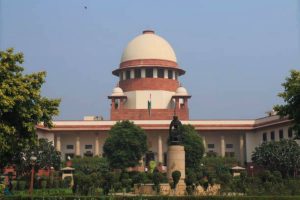It is gratifying to see that the nation is, at different levels, rallying behind the farmers, who are currently preparing to march to the Indian capital, probably in numbers that the country has never seen before and in a manner befitting the crisis that is overwhelming the agriculture sector.
Parking aside the question of whether or not this march of the farmer will move the government, it would be worthwhile for the urban intelligentsia to familiarise itself with issues that impinge on India’s hard-earned food security, as policy-driven disasters visit the countryside.
Punjab’s fertile soil is all but decimated by chemical leeching as cancer pervades the land; Vidarbha has gained notoriety for some three lakh farmer suicides (1998- 2018); for Bundelkhand, drought is the new normal; elsewhere, tomatoes, potatoes, vegetables and milk get thrown on the streets because the cost of transporting them to mandis is not recovered by the price that the producers receive.
Bumper crop or crop failure, the farmer receives it in the neck and, even as lip service is paid to the ‘cause’, the fact is that no more than six per cent of Indian farmers are able to sell their produce at the minimum support price.
Further, as the Centre for Study of Developing Societies survey of March 2018 established, while an overwhelming number want to quit farming; no more than 19 per cent want subsidies to continue because they serve no purpose; only 27 per cent have heard about the land acquisition law and 70 per cent of farmers have never heard about direct cash transfer in a chronicle of woes that has even the National Bank for Agriculture and Rural Development reportedly handing over more than 50 per cent of its projected credit flow (2017) to Mumbai and its suburbs instead of disbursing it in the devastated Vidarbha and Marathwada, which got less than 16 per cent.
The crisis cannot be resolved by throwing money at it nor by waiving loans; without institutional reforms, the loans will be back. Indeed, policies around liberalization and deregulation have tightened the noose around the farmer’s neck courtesy increased costs of inputs, withdrawal of subsidies, paltry investments in infrastructure, irrigation, drainage and flood control or even on technical extension services.
The aam aadmi is finally waking up to this fact and many employed in towns from farming backgrounds, the jawan, the clerk, the school teacher and even the student, have realized that agricultural apocalypse is nigh.
The government has finally admitted that demonetisation was disastrous for the farm economy and one can only hope that a sense of shame will make it call a joint session of Parliament for members to come to grips with survival issues facing a segment of the economy employing 50 per cent of its workforce and impacting on more than 60 per cent of its population while ensuring that the country stays food secure. When one last checked, India was still a democracy.











